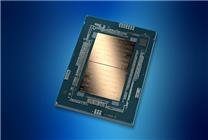ARM vs. x86: The Rise of ARM in Performance and Cost-Effectiveness
Summary:
- ARM is rapidly gaining market share in the PC and server sectors, posing a significant challenge to established x86 processors from AMD and Intel.
- Recent studies reveal that ARM processors, particularly Amazon’s Graviton4, outperform x86 competitors in both performance and cost-effectiveness.
- As more enterprises adopt ARM, the landscape of computing is shifting, potentially ending the long-standing dominance of x86 architectures.
The Shift from x86 to ARM
In a notable turn of events, ARM processors are increasingly encroaching on the territory traditionally held by x86 architectures, notably from giants like AMD and Intel. As of October 2023, it has become evident that the competition between ARM and x86 is intensifying, with ARM making significant inroads into PC and server markets. Though AMD has publicly dismissed rumors about the inefficiency of x86 processors, claiming those assertions were debunked last year, the ARM camp has shown formidable strength.
Performance Analysis: ARM Leads the Pack
A recent report from consulting firm Signal65 tested Amazon AWS’s Graviton4 processor and its performance against AMD’s EPYC and Intel’s Xeon processors, known for high performance within the x86 landscape. This comprehensive evaluation covered various fields, including large language model (LLM) inference, machine learning (ML) tasks, database operations, and web services.
Key findings indicate that ARM processors offer remarkable advantages:
- AI Performance: ARM demonstrates a staggering 160% higher AI performance compared to its x86 counterparts.
- Cost-Effectiveness: The cost efficiency of ARM processors is estimated to be around 200% greater than that of AMD and Intel offerings.
Further Insights
- Machine Learning: ARM exhibits a 30-50% performance edge in ML tasks, with a cost-effectiveness improvement of over 50%.
- Database Operations: In handling database tasks, ARM processors lead with performance metrics 40-90% higher and a cost-effectiveness rating that outstrips x86 by 60-150%.
- Networking: Network performance stats show ARM’s advantage as about 50% higher with a cost-effectiveness increase of 70-80%.
This comprehensive analysis paints a compelling picture: ARM processors excel in both performance and cost-efficiency across various metrics, suggesting a significant paradigm shift in computing.
The Future: ARM’s Vision for the Market
ARM’s ambitions don’t stop with impressive benchmarks; they predict that by 2025, half of the computing platforms delivered to large enterprises will be based on ARM architecture. This projection could potentially disrupt the long-standing x86 monopoly that has defined the industry for decades.
Although these findings primarily relate to cloud computing, they are indicative of ARM’s growing capabilities which can also be demonstrated in the PC sector. The performance of Apple’s M series processors has proven to be competitive or even superior to high-end AMD and Intel processors.
Competitive Pricing: ARM vs. x86
One of the most compelling aspects of ARM’s rise lies in its pricing strategy. For instance, the Mac mini equipped with the M4 processor is expected to retail for around 3,000 yuan this year. Not only is this pricing strategy more affordable than similarly equipped mini computers running on x86 processors, but the performance is unparalleled, especially in AI tasks. In contrast, AMD’s Ryzen AI Max+395, capable of AI operations, commands a price exceeding 10,000 yuan.
Conclusion: A New Era in Computing
As ARM processors continue to showcase superior performance and higher cost-effectiveness, the dynamics of the computing industry are undeniably shifting. Both AMD and Intel are now confronted with a growing threat from ARM, as the latter’s advances in technology and competitive pricing may well redefine industry standards.
This transformative phase highlights the importance of agility and innovation in a landscape that has long favored x86 architectures. The outcome of this rivalry will shape not only the future of enterprise computing but could also have lasting implications for consumers and businesses alike.
The landscape of computing is evolving swiftly. As ARM continues to innovate and prove its prowess, the traditional dominance of x86 may very well be challenged, suggesting a new era filled with possibilities.







